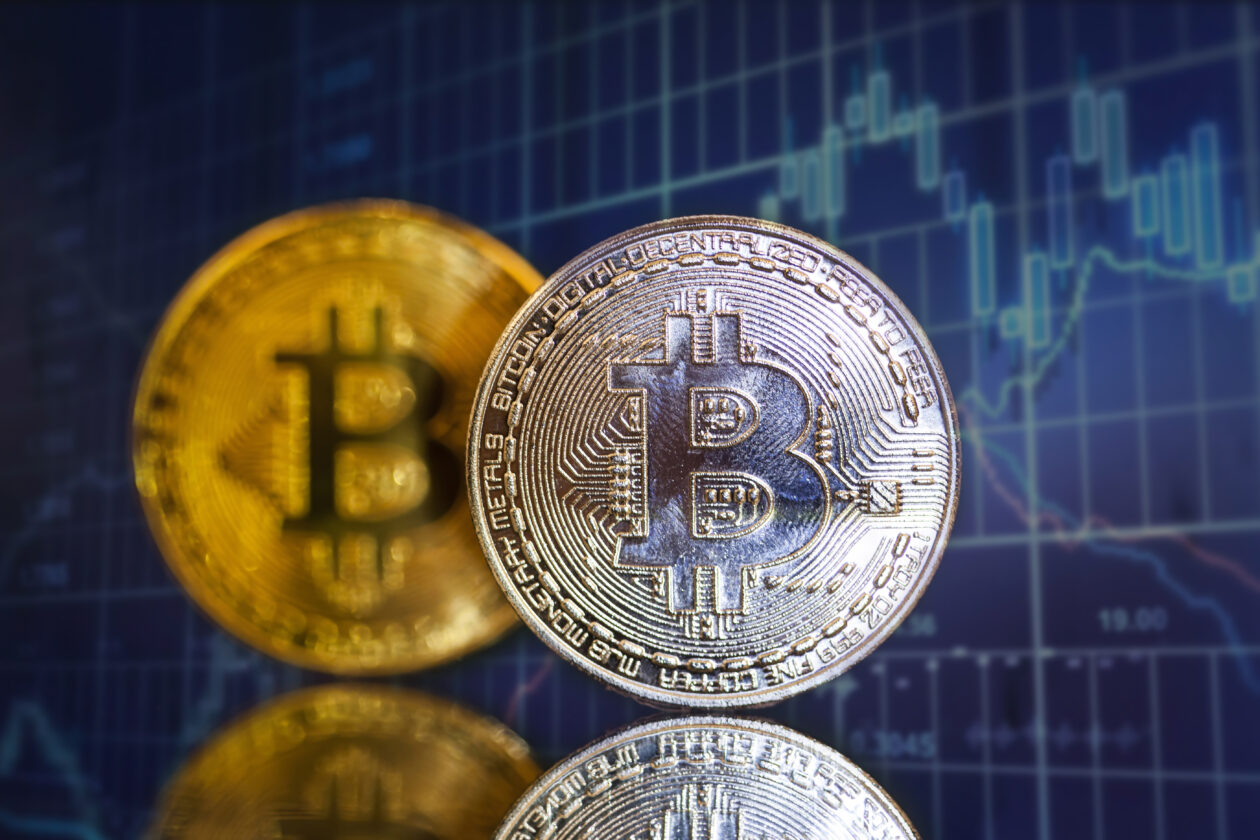Bitcoin edged lower on Tuesday morning in Asia to trade below the weekend’s resistance level of US$26,000. Ether dipped to near the US$1,600 mark, while other top 10 non-stablecoin cryptocurrencies traded mixed. XRP posted the biggest gains while Solana led the losers. Digital asset investment products saw a minor outflow last week accompanied by a surge in trading volumes, indicating mixed sentiment among institutional investors. U.S. stock futures traded mixed ahead of regular trading following the long holiday weekend.
Bitcoin below US$26,000
Bitcoin dipped 0.57% in the last 24 hours to US$25,804.63 as of 07:30 a.m. in Hong Kong for a weekly loss of 1.15%, according to CoinMarketCap data. The world’s leading cryptocurrency had been trading in the US$26,000 range since Friday. It briefly breached US$28,000 last Tuesday as an apparent victory for Grayscale Investment against the U.S. Securties and Exchange Commission boosted sentiment. That optimism has now cooled.
Ether dipped 0.49% to US$1,627.26, losing 1.58% over the past seven days.
The crypto market is suffering from regulatory uncertainties in the U.S., said Samer Hasn, market analyst for online brokerage XS.com, in an emailed comment. He also noted the effect of large transactions on the market, including a US$213 million XRP transaction and a US$37 million Shiba Inu transaction recorded over the weekend.
“Although the reasons behind the series of huge transfers that we are witnessing in the cryptocurrency market are not yet completely clear, I believe that they may continue to fuel a state of anticipation and caution in the markets, especially since these transfers come amid weak sentiment among market participants, with the continuing battle in the judicial arena in the United States,” Hasn said.
Meanwhile, Binance’s global head of product Mayur Kamat resigned from the company, Reuters reported on Monday. The world’s largest crypto exchange faces lawsuits from the U.S. SEC and Commodity Futures Trading Commission (CFTC), as well as an investigation from the U.S. Department of Justice (DOJ).
Most other top 10 non-stablecoin cryptocurrencies traded mixed over the past 24 hours, with movement within the 1% range across the board. XRP led the winners with a 0.61% gain to US$0.5082, but remained 3.01% lower for the week.
Digital asset investment products saw a minor outflow of US$11.2 million in the week ending Sept. 1. That was a slowdown from US$168 million last week, according to a Monday report by European alternative asset manager CoinShares. Despite the small outflow, digital investment products’ trading volume totaled US$2.8 billion, a 90% rise on the year-to-date average.
“The recent minor outflows from digital asset funds may be due to uncertainty around the approval of the spot Bitcoin ETFs — following an initial surge of enthusiasm upon their announcement,” said John Stefanidis, CEO of blockchain infrastructure foundation Balthazar DAO.
“As we approach the upcoming Bitcoin halving event, it will be interesting to see how these regulatory uncertainties are balanced,” he added.
The Bitcoin halving event will see the amount of new tokens issued every 10 minutes cut in half, increasing its scarcity. This is widely anticipated to produce a surge in the token’s price. The next Bitcoin halving is expected to take place in April 2024.
Elsewhere, crypto exchange Bybit introduced TradeGPT on Monday — an artificial intelligence-powered education tool that uses ChatGPT to generate market analysis and answer technical questions based on Bybit’s real-time market data. Other crypto exchanges including Binance, Crypto.com and OKX also launched A.I.-powered analyzing tools earlier this year.
The total crypto market capitalization dipped 0.56% to US$1.04 trillion. Trading volume rose 20.65% to US$23.77 billion.
U.S. stock futures dip; China services activity slows

U.S. stock futures were trading lower ahead of the opening bell Tuesday after a holiday-extended weekend for markets. Despite closing mixed on Friday, all three major U.S. indexes posted weekly gains, with Friday’s jobs data easing rate hike worries.
All the main stock indexes across Asia were showing losses as of 10:00 a.m. in Hong Kong.
China’s release of key economic data Tuesday morning cast a cloud over markets. The Caixin China services purchasing managers index (PMI) — a private gauge of the business activities in the country’s service industry — dropped from 54.1 in July to 51.8 in August, the lowest level in the past eight months. A PMI reading above 50 indicates a growth in business activities, while a sub-50 reading indicates a contraction.
The PMI report followed an unexpected expansion in China’s manufacturing industry on September 1. But a slowdown of growth in the services industry provides more evidence of a wider economic downturn.
“The marginal slowdown in the services sector’s supply and demand expansion offset the improvement in manufacturing production and demand,” Wang Zhe, an economist at Caixin Insight Group, told Reuters. “There was still considerable downward pressure on the economy.”
Meanwhile, Japan’s manufacturing PMI rose from 53.8 in July to 54.3 in August — the highest reading in three months, according to Reuters on Tuesday.
“A stronger improvement in new orders received by Japanese service firms underpinned an acceleration in business activity growth,” Usamah Bhatti, an economist at S&P Global Market Intelligence, told Reuters. “That said, service providers signalled a steeper increase in inflationary pressures during August.”
Investors now await a decision on interest rates from the Reserve Bank of Australia expected later Tuesday. Analysts expect the country’s central bank to keep the rate unchanged at 4.10% for the third straight month, Bloomberg reported on Tuesday.
In the U.S., the Federal Reserve will meet on Sept. 20 to make its next move on interest rates, which are currently between 5.25% and 5.50%, the highest level in 22 years.
The CME FedWatch Tool predicts a 93% chance the Fed will maintain the current rate unchanged in September, up from 78% on August 28.
Further indication of how the Fed’s plan for rates will arrive with a series of official speeches on Thursday. Elsewhere, S&P will release its U.S. services purchasing manager index (PMI) for August on Wednesday.
(Updates with equity section.)




